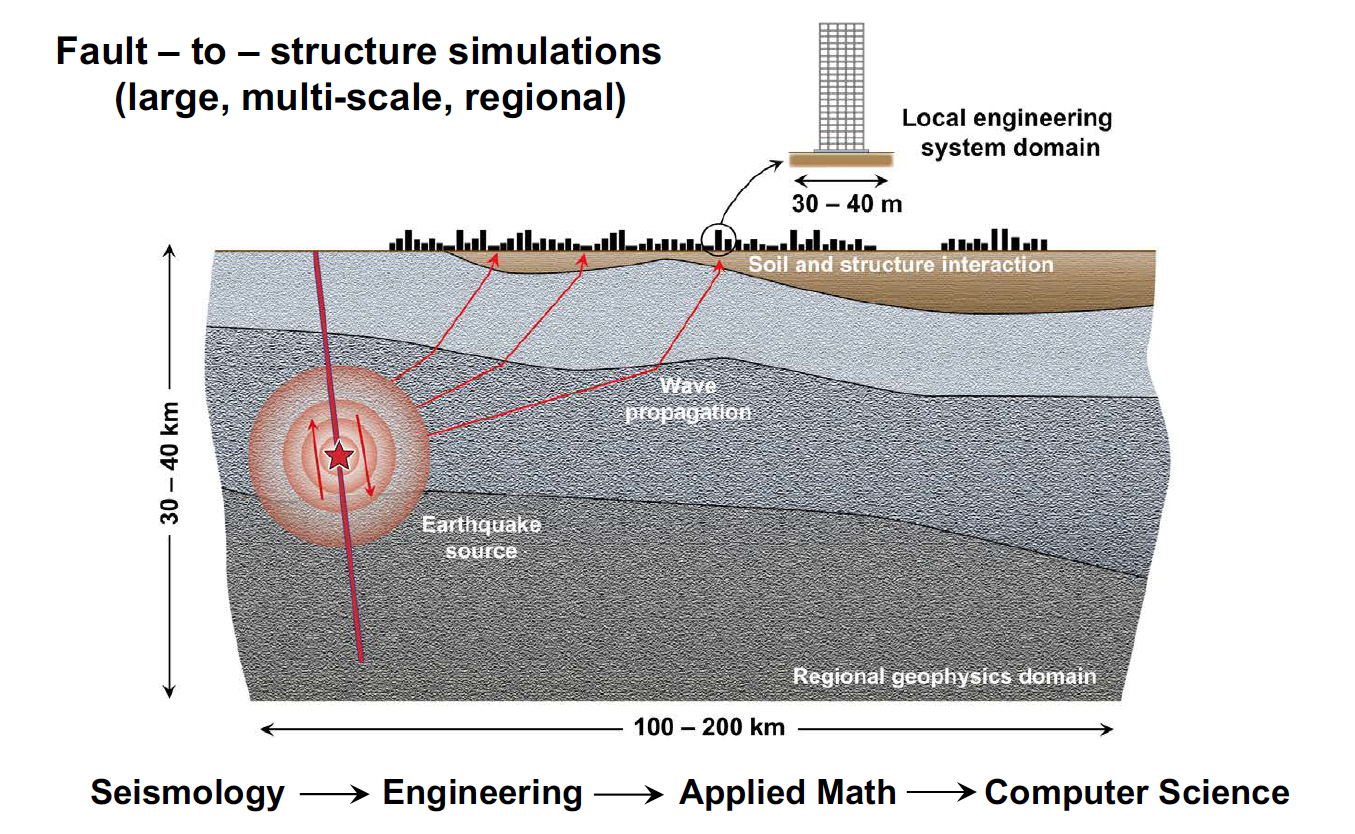Scientists from Lawrence Berkeley National Lab (Berkeley Lab) and Lawrence Livermore National Lab facilitated a workshop, in collaboration with the Pacific Earthquake Engineering Research Center (PEER) at UC Berkeley to develop regional-scale earthquake simulations and create an open-access database of ground motion data that will be available to the broad research and engineering practitioner communities. The event, held from January 18-19, was hosted at University of California, Berkeley’s Banatao Auditorium.
Traditional earthquake hazard and risk assessments have been based on using data from historical earthquakes in a statistical model to predict future earthquakes. However, this approach does not fully capture how these motions might differ throughout a larger region with site-to-site variability. To provide deeper understanding of site-specific motions and the factors most influential to earthquake-induced ground motions and their regional variability, scientists are developing high-performance computer modeling methods that can simulate earthquake processes, from fault rupture to infrastructure interaction, on a larger scale.
The goal of the workshop was to share the latest research on the development of earthquake motion simulations and the technical challenges that must be overcome to create a reliable and comprehensive dataset. The workshop also showed what types of data will be provided in the open-access database to a broad community of stakeholders.
Senior scientist David McCallen, who leads the Critical Infrastructure Initiative for the Energy Geosciences Division at Berkeley Lab, helped facilitate the conference. “The DOE Exascale Computing Project has provided a new generation of computer software in the EarthQuake SIMulation (EQSIM) framework, which, when coupled with the advanced Department of Energy (DOE) computers that can perform mathematical calculations at high speeds, is providing the opportunity for tremendous advancement in regional-scale earthquake simulations,” he explained.
McCallen presented an overview of the earthquake motion simulations, sharing the challenges that come along with that, including a lack of historical data for earthquakes in the Bay Area specifically. He also explained the growing significance of simulated physics-based approaches that can span hundreds of kilometers and how Berkeley Lab and PEER have collaborated to develop this fault-to-structure simulation of earthquakes.
With 180 participants from 20 countries, the workshop provided perspectives from experts regarding the elements that will advance regional simulations and an open-access dataset, the ins-and-outs of the model and its various attributes, and discussion on future community interactions. These collaborative events can help propel scientists’ understanding of earthquakes and give opportunities for networking in a research area that requires a multidisciplinary approach.
This effort is supported by the DOE Office of Cyber Security, Energy Security, and Emergency Response in their mission to ensure the resilience of U.S. energy systems.


